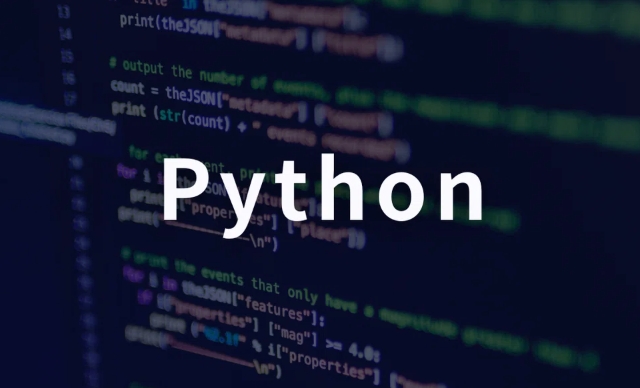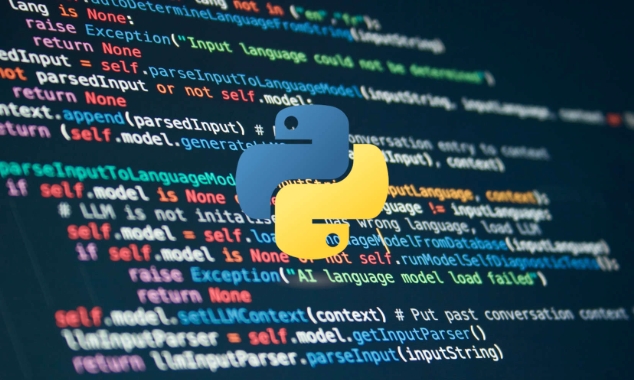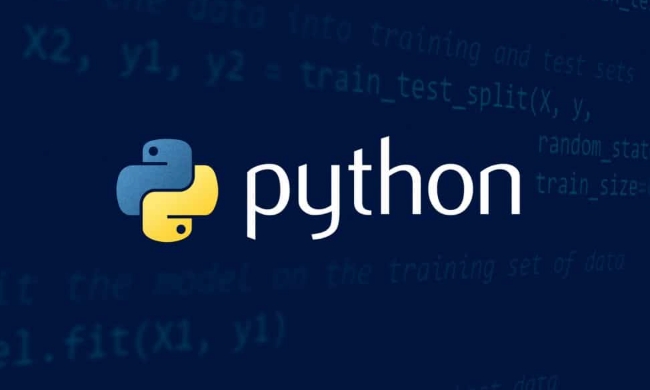Clustering in scikit-learn involves using K-Means, DBSCAN, Hierarchical, and MiniBatch K-Means methods. 1. K-Means is fast, requires specifying clusters, and uses the Elbow Method for selection; 2. DBSCAN handles noise and arbitrary shapes, using eps and min_samples; 3. Hierarchical clustering visualizes relationships via dendrograms but struggles with large data; 4. MiniBatch K-Means improves speed for large datasets with slight accuracy trade-offs. Each method suits different data and goals, from quick grouping to noise handling and interpretation.

Clustering is a type of unsupervised learning used to group similar data points together. With Python’s scikit-learn library, you have access to several powerful clustering algorithms that are easy to implement and customize.

Here's how to work with some of the most commonly used clustering methods using scikit-learn.
K-Means Clustering: Fast and Simple
K-Means is one of the most widely used clustering algorithms due to its simplicity and efficiency. It partitions data into k clusters based on distances.

To use it:
- Decide the number of clusters
n_clusters - Initialize the model:
KMeans(n_clusters=3) - Fit and predict:
.fit(X)or.fit_predict(X)
A common issue people run into is choosing the right number of clusters. One practical approach is the Elbow Method, which involves plotting inertia (sum of squared distances) for different values of k. The “elbow” point gives a reasonable choice for k.

from sklearn.cluster import KMeans
import matplotlib.pyplot as plt
inertias = []
for i in range(1, 11):
kmeans = KMeans(n_clusters=i, random_state=0)
kmeans.fit(X)
inertias.append(kmeans.inertia_)
plt.plot(range(1,11), inertias)
plt.xlabel('Number of clusters')
plt.ylabel('Inertia')
plt.show()Keep in mind that K-Means assumes clusters are convex and isotropic — so it might not perform well on non-spherical or irregularly shaped data.
DBSCAN: Great for Arbitrary Shapes
If your data has complex shapes or contains noise, DBSCAN (Density-Based Spatial Clustering of Applications with Noise) is a better fit than K-Means.
It works by grouping together points that are closely packed and marks isolated points as noise.
Key parameters:
eps: maximum distance between two samples for them to be considered neighborsmin_samples: minimum number of samples in a neighborhood for a point to be considered a core point
from sklearn.cluster import DBSCAN dbscan = DBSCAN(eps=3, min_samples=5) labels = dbscan.fit_predict(X)
One tricky part with DBSCAN is choosing the right eps. A good way is to look at the k-distance graph and pick a value where there’s a sharp increase (like an elbow).
This method doesn’t require specifying the number of clusters upfront and handles outliers naturally.
Hierarchical Clustering: Visual and Interpretable
Hierarchical clustering builds a tree-like structure of clusters, making it easier to visualize relationships through a dendrogram.
There are two main approaches:
- Agglomerative: starts with each point as its own cluster and merges them
- Divisive: starts with all points in one cluster and splits recursively
Using AgglomerativeClustering in scikit-learn:
from sklearn.cluster import AgglomerativeClustering cluster = AgglomerativeClustering(n_clusters=3) labels = cluster.fit_predict(X)
You can also cut the dendrogram at a specific distance threshold to get clusters:
from scipy.cluster.hierarchy import dendrogram, linkage linked = linkage(X, 'ward') dendrogram(linked) plt.show()
While this method gives more insight into cluster hierarchy, it doesn’t scale well with large datasets.
MiniBatch K-Means: Faster Alternative to K-Means
When working with large datasets, MiniBatch K-Means is a faster version of K-Means that uses random samples of the data in each iteration.
Use it like this:
from sklearn.cluster import MiniBatchKMeans mbk = MiniBatchKMeans(n_clusters=3, batch_size=100) mbk.fit(X)
The trade-off is slightly lower accuracy, but the speed improvement can be significant. This makes it a solid option when you're dealing with thousands or millions of data points and need quick results.
That’s a basic breakdown of how to apply popular clustering algorithms using scikit-learn. Each has its strengths and best-use scenarios — from fast grouping with K-Means, handling noise with DBSCAN, interpreting relationships via hierarchical methods, to scaling up with MiniBatch K-Means.
Depending on your data shape, size, and goal, one of these should fit just fine.
The above is the detailed content of Clustering Algorithms with Python Scikit-learn. For more information, please follow other related articles on the PHP Chinese website!

Hot AI Tools

Undress AI Tool
Undress images for free

Undresser.AI Undress
AI-powered app for creating realistic nude photos

AI Clothes Remover
Online AI tool for removing clothes from photos.

Clothoff.io
AI clothes remover

Video Face Swap
Swap faces in any video effortlessly with our completely free AI face swap tool!

Hot Article

Hot Tools

Notepad++7.3.1
Easy-to-use and free code editor

SublimeText3 Chinese version
Chinese version, very easy to use

Zend Studio 13.0.1
Powerful PHP integrated development environment

Dreamweaver CS6
Visual web development tools

SublimeText3 Mac version
God-level code editing software (SublimeText3)
 Polymorphism in python classes
Jul 05, 2025 am 02:58 AM
Polymorphism in python classes
Jul 05, 2025 am 02:58 AM
Polymorphism is a core concept in Python object-oriented programming, referring to "one interface, multiple implementations", allowing for unified processing of different types of objects. 1. Polymorphism is implemented through method rewriting. Subclasses can redefine parent class methods. For example, the spoke() method of Animal class has different implementations in Dog and Cat subclasses. 2. The practical uses of polymorphism include simplifying the code structure and enhancing scalability, such as calling the draw() method uniformly in the graphical drawing program, or handling the common behavior of different characters in game development. 3. Python implementation polymorphism needs to satisfy: the parent class defines a method, and the child class overrides the method, but does not require inheritance of the same parent class. As long as the object implements the same method, this is called the "duck type". 4. Things to note include the maintenance
 Explain Python generators and iterators.
Jul 05, 2025 am 02:55 AM
Explain Python generators and iterators.
Jul 05, 2025 am 02:55 AM
Iterators are objects that implement __iter__() and __next__() methods. The generator is a simplified version of iterators, which automatically implement these methods through the yield keyword. 1. The iterator returns an element every time he calls next() and throws a StopIteration exception when there are no more elements. 2. The generator uses function definition to generate data on demand, saving memory and supporting infinite sequences. 3. Use iterators when processing existing sets, use a generator when dynamically generating big data or lazy evaluation, such as loading line by line when reading large files. Note: Iterable objects such as lists are not iterators. They need to be recreated after the iterator reaches its end, and the generator can only traverse it once.
 How to handle API authentication in Python
Jul 13, 2025 am 02:22 AM
How to handle API authentication in Python
Jul 13, 2025 am 02:22 AM
The key to dealing with API authentication is to understand and use the authentication method correctly. 1. APIKey is the simplest authentication method, usually placed in the request header or URL parameters; 2. BasicAuth uses username and password for Base64 encoding transmission, which is suitable for internal systems; 3. OAuth2 needs to obtain the token first through client_id and client_secret, and then bring the BearerToken in the request header; 4. In order to deal with the token expiration, the token management class can be encapsulated and automatically refreshed the token; in short, selecting the appropriate method according to the document and safely storing the key information is the key.
 How to iterate over two lists at once Python
Jul 09, 2025 am 01:13 AM
How to iterate over two lists at once Python
Jul 09, 2025 am 01:13 AM
A common method to traverse two lists simultaneously in Python is to use the zip() function, which will pair multiple lists in order and be the shortest; if the list length is inconsistent, you can use itertools.zip_longest() to be the longest and fill in the missing values; combined with enumerate(), you can get the index at the same time. 1.zip() is concise and practical, suitable for paired data iteration; 2.zip_longest() can fill in the default value when dealing with inconsistent lengths; 3.enumerate(zip()) can obtain indexes during traversal, meeting the needs of a variety of complex scenarios.
 What are Python type hints?
Jul 07, 2025 am 02:55 AM
What are Python type hints?
Jul 07, 2025 am 02:55 AM
TypehintsinPythonsolvetheproblemofambiguityandpotentialbugsindynamicallytypedcodebyallowingdeveloperstospecifyexpectedtypes.Theyenhancereadability,enableearlybugdetection,andimprovetoolingsupport.Typehintsareaddedusingacolon(:)forvariablesandparamete
 What are python iterators?
Jul 08, 2025 am 02:56 AM
What are python iterators?
Jul 08, 2025 am 02:56 AM
InPython,iteratorsareobjectsthatallowloopingthroughcollectionsbyimplementing__iter__()and__next__().1)Iteratorsworkviatheiteratorprotocol,using__iter__()toreturntheiteratorand__next__()toretrievethenextitemuntilStopIterationisraised.2)Aniterable(like
 Explain Python assertions.
Jul 07, 2025 am 12:14 AM
Explain Python assertions.
Jul 07, 2025 am 12:14 AM
Assert is an assertion tool used in Python for debugging, and throws an AssertionError when the condition is not met. Its syntax is assert condition plus optional error information, which is suitable for internal logic verification such as parameter checking, status confirmation, etc., but cannot be used for security or user input checking, and should be used in conjunction with clear prompt information. It is only available for auxiliary debugging in the development stage rather than substituting exception handling.
 Python FastAPI tutorial
Jul 12, 2025 am 02:42 AM
Python FastAPI tutorial
Jul 12, 2025 am 02:42 AM
To create modern and efficient APIs using Python, FastAPI is recommended; it is based on standard Python type prompts and can automatically generate documents, with excellent performance. After installing FastAPI and ASGI server uvicorn, you can write interface code. By defining routes, writing processing functions, and returning data, APIs can be quickly built. FastAPI supports a variety of HTTP methods and provides automatically generated SwaggerUI and ReDoc documentation systems. URL parameters can be captured through path definition, while query parameters can be implemented by setting default values ??for function parameters. The rational use of Pydantic models can help improve development efficiency and accuracy.






